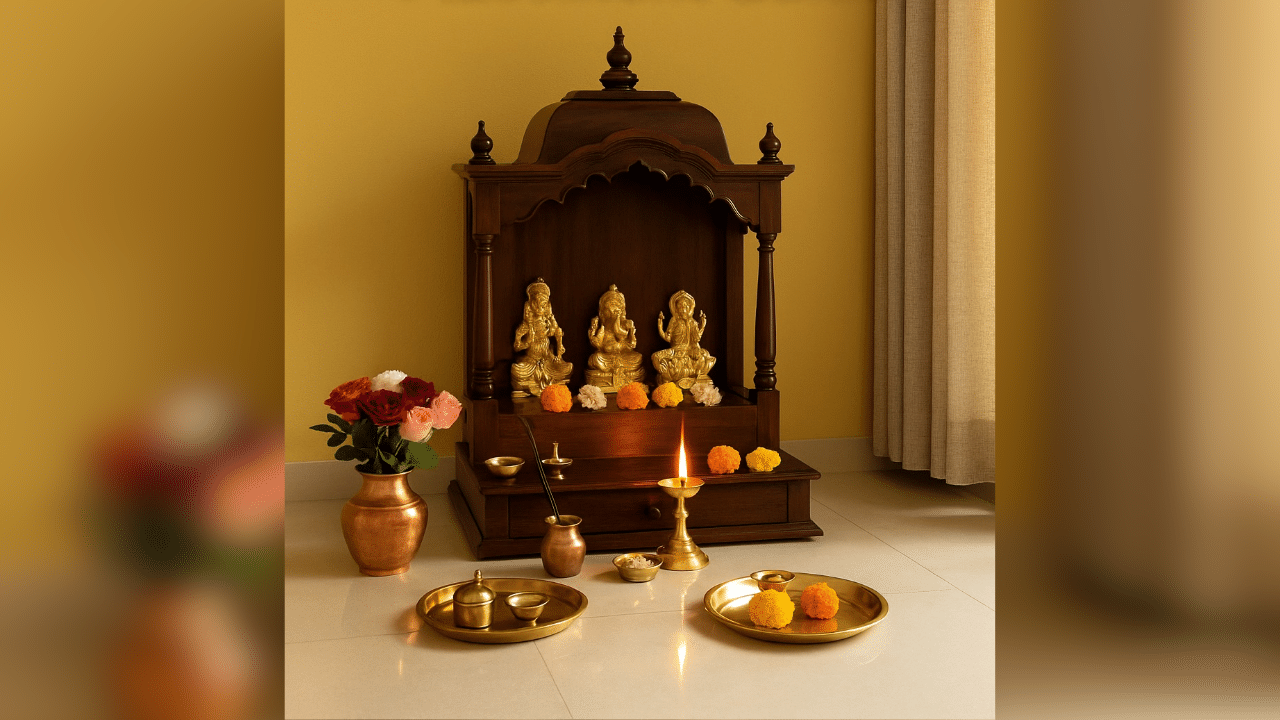Mumbai: In Hindu homes, the temple or puja ghar is not just a place of worship—it’s the spiritual centre of the household. According to Vastu Shastra, an ancient Indian architectural science, the location and direction of your home temple can greatly influence the flow of divine energy and prosperity in your life. Experts believe that aligning the temple in the right direction fosters peace, harmony, and spiritual wellbeing.
The most auspicious direction for placing a home temple is the northeast corner, known as the Ishaan Kon. This zone is considered the abode of the gods and is deeply sacred. The temple should face the east, and worshippers should sit facing either east or north during prayer. However, there are several more important do’s and don’ts to ensure that the space remains pure, energised, and spiritually aligned.
Ideal Placement and Direction
The temple should be placed in the northeast direction (Ishaan Kon), which receives the first rays of the rising sun and is considered the most spiritually potent.
Always ensure that the temple faces east, and while performing puja, the devotee should also face either east or north.
Avoid placing the temple next to or inside bedrooms, bathrooms, or kitchens.
South direction can be used to house intense deities or ugra devtas, but this must be done with caution and proper rituals.
Worship Direction: What Matters More?
It’s commonly advised that the devotee’s face should be towards the east or north while praying, not necessarily the deity’s.
The correct direction for you personally can also be determined using Ashtakvarga calculations based on your birth chart, according to Vedic astrology.
Vastu Do’s and Don’ts for the Puja Room
Do’s:
- Keep the temple clean and uncluttered, with only essential puja items.
- Use copper vessels if possible, or steel as a second-best alternative.
- Make sure the temple walls are painted light yellow or sky blue, and use white stone if constructing a permanent space.
- Always enter the temple area after bathing, or at the very least, wash your feet thoroughly before entering. Pour water using the right hand, wash the back of your feet first, then the front, and finally sprinkle water on your head.
- Place the puja room’s cupboard or storage in the southwest zone.
- Hang photos of ancestors in the southwest, or in the south if that’s not possible.
- If holy books are kept in the temple, place them in the northeast as well.
Don’ts:
- Never place the temple or deity idols on a kitchen slab, bedroom, or shared wall with a toilet.
- Ensure that the temple door and toilet door don’t face each other.
- Avoid keeping damaged or broken idols, or triangular-shaped idols.
- Do not place multiple idols of the same deity.
- Never bring used idols from another temple into your home.
- Idols should be between 2 to 10 inches in height—not too large.
- During prayer, the deity’s feet should align with the devotee’s chest, never below.
- Don’t store anything unrelated to worship inside the temple.
Special Notes on Ganesha and Ancestors
Install a double-faced Ganesha idol at the entrance of your home for positivity. Ganesha’s back symbolises the underworld and should never face inside the home.
Place two Ganesha idols back-to-back near the main door, with the face facing outwards.
By following these Vastu principles, your home temple can become a source of spiritual power, divine energy, and emotional peace. It’s not just about tradition—it’s about creating a sacred, balanced space that nourishes your soul and supports your daily spiritual practices.
(Disclaimer: The information provided is based on traditional beliefs and religious texts. News9 Live does not endorse or validate these claims.)
